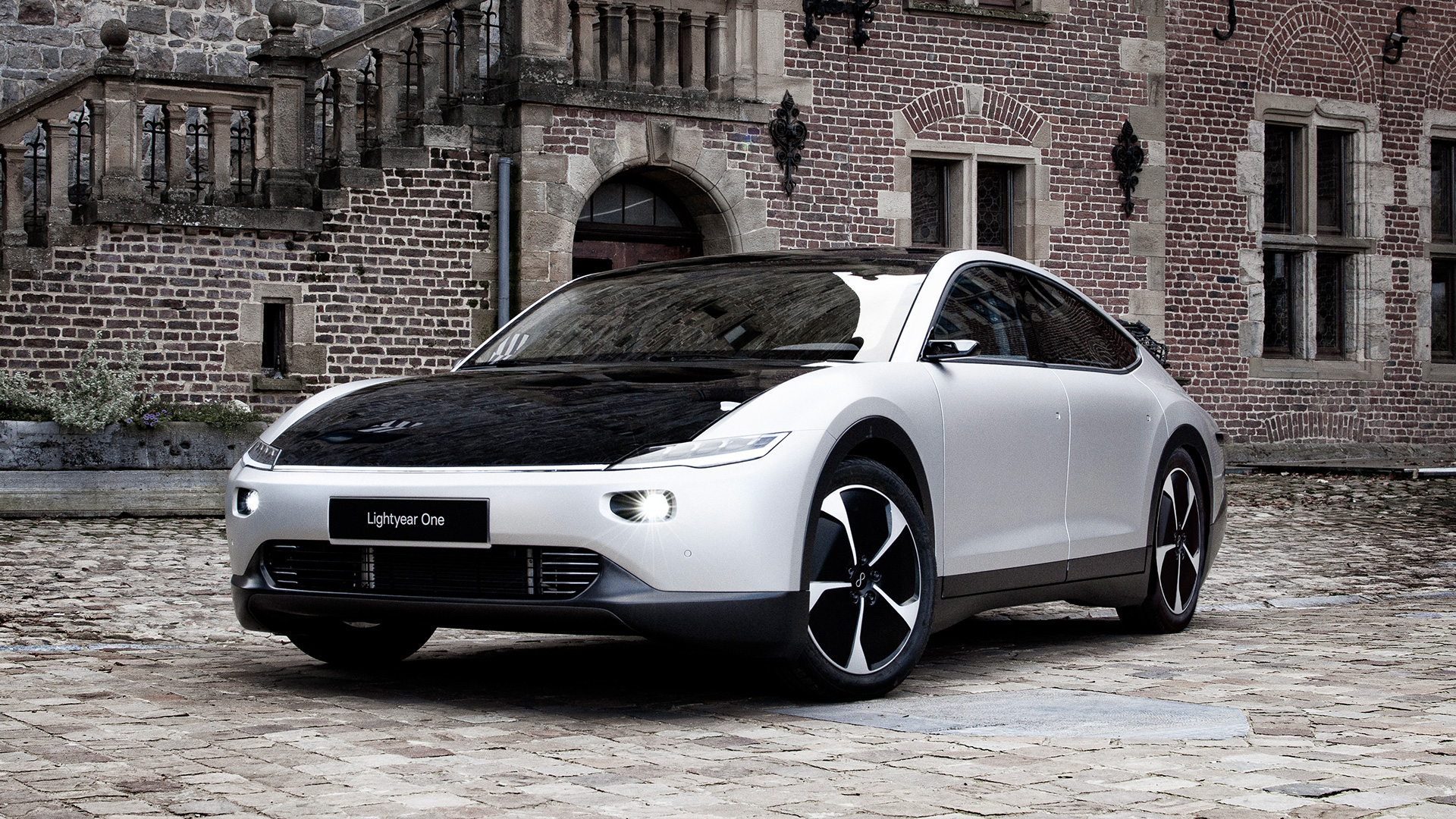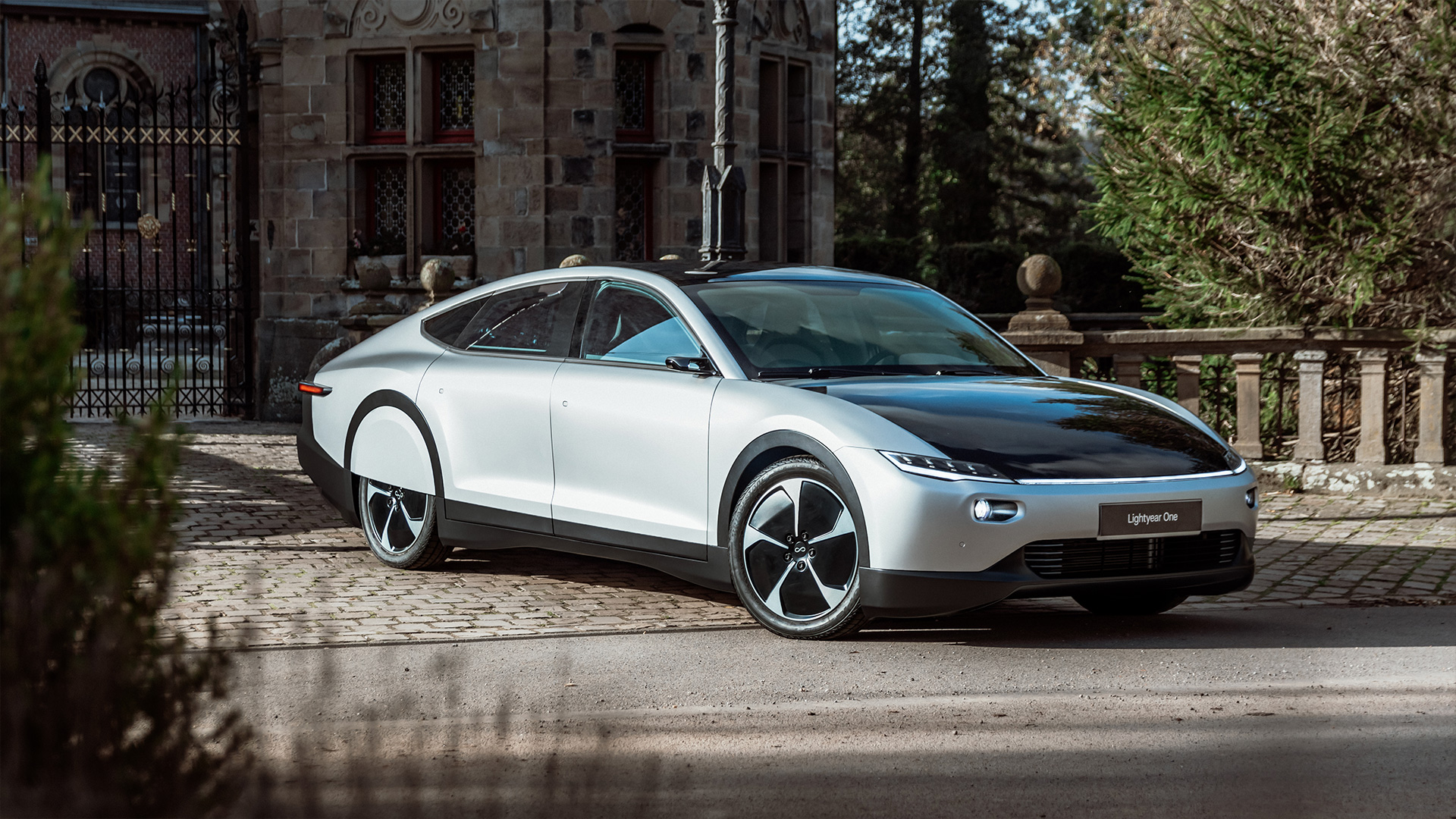Lightyear One solar EV just hit amazing 441 miles of range in new test
The best part is that the solar panels didn't actually do much work

Recharge times are still something of an issue with even the best electric cars, and no matter how fast the newer models may be they’re still not as fast as filling up with gas. But what if you could recharge while you drive?
The Lightyear One prototype is one such car, utilizing solar panels to top up the 60kWh battery pack. And its latest track test managed to keep its battery going for a very impressive 441 miles.
- Here are the best electric cars you can buy right now
- Plus: Tesla hatchback: $25K price, release date, possible range and more
Initially, the Lightyear One promised to offer 450 miles of range, which some people have been skeptical about given the relatively small size of the battery. However, the fact that the car has managed to hit the 441-mile mark without having to stop and recharge shows that Lightyear is definitely going about things the right way.
The test was conducted at the Aldenhoven testing Center in Germany, with a full drive cycle going at 53 miles per hour. Lightyear CEO Lex Hoeflsoot told Elektrek that the whole test took almost ten hours to complete, since drivers were swapped every two hours, and the car itself drove for just under nine hours.

Interestingly, the solar panels themselves didn’t play a huge part in the Lightyear One’s endurance. Lightyear has claimed that the panels could offer up to 45 miles of range on a sunny day, though the test took place on “a bit of a cloudy day” and that naturally affected the recharge rate.
Hoeflsoot said that the panels were able to generate around 3.4kWh, which translated to around 25 miles. Had the weather been a little better, the Lightyear One may have made it past the 450-mile mark. That said, getting around 416 miles from the battery is still incredibly impressive. Impressive enough that it surpassed the company’s own expectations.
“It definitely surpassed expectations on such a very early run,” Hoeflsoot tole Elektrek. “We know we can still improve on for example aerodynamics, the powertrain, brakes, and suspension. So we are very happy with these early results. It was very cool to see that our vehicle performance model did a good job in predicting these outcomes."
Sign up to get the BEST of Tom's Guide direct to your inbox.
Get instant access to breaking news, the hottest reviews, great deals and helpful tips.

However, that’s not the end of the road, with the Lightyear CEO explaining that “At the same time, it will give valuable input on how to improve the model and also fine-tune our models for side-wind, brakes, and ambient temperatures. For example, it was quite a windy day at the track, so we saw a deviation there with the predictions from our model.”
This test is a big step, because it shows just how far an electric car can go on a fairly small battery. All you need to do is focus on energy efficiency and making sure every kWh goes as far as possible. Not only will that improve a car's overall range, and reduce the amount of charging it needs, it'll also help lower the cost of long-range vehicles. Because batteries are expensive, and cutting it down to size means you can hack some dollars off the final price.
The Lightyear One is now due for some more fine tuning, ahead of a limited release of 946 cars early next year. However you’ll have to wait a few years for a mass market Lightyear, which isn’t expected to arrive until sometime in 2024.
- More: How long does it take to charge an electric car? What you need to know

Tom is the Tom's Guide's UK Phones Editor, tackling the latest smartphone news and vocally expressing his opinions about upcoming features or changes. It's long way from his days as editor of Gizmodo UK, when pretty much everything was on the table. He’s usually found trying to squeeze another giant Lego set onto the shelf, draining very large cups of coffee, or complaining about how terrible his Smart TV is.
